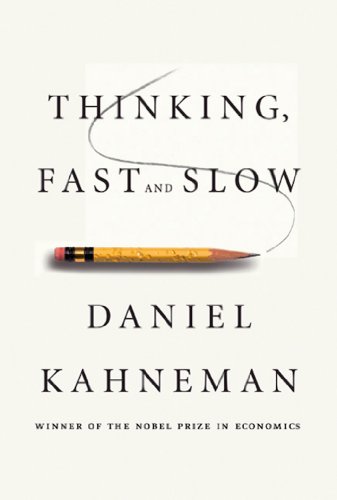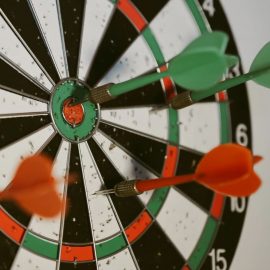

This article is an excerpt from the Shortform summary of "Thinking, Fast and Slow" by Daniel Kahneman. Shortform has the world's best summaries of books you should be reading.
Like this article? Sign up for a free trial here .
What does “representativeness” mean in psychology? What are examples of representativeness heuristics?
The representative heuristic is when you organize objects by their similarities and categorize them around a prototype. The representativeness heuristic describes when we estimate the likelihood of an event by comparing it to an existing prototype in our minds.
We’ll go more in depth into the above representative heuristic definition and cover multiple representative heuristic examples in psychology.
Representativeness Heuristics Example #1
Read the following description of a person.
Tom W. is meek and keeps to himself. He likes soft music and wears glasses. Which profession is Tom W. more likely to be? 1) Librarian. 2) Construction worker.
If you picked librarian without thinking too hard, you used the representativeness heuristic – you matched the description to the stereotype, while ignoring the base rates.
Ideally, you should have examined the base rate of both professions in the male population, then adjusted based on his description. Construction workers outnumber librarians by 10:1 in the US – there are likely more shy construction workers than all librarians!
The Use and Danger of Representative Heuristics
More generally, the representativeness heuristic describes when we estimate the likelihood of an event by comparing it to an existing prototype in our minds – matching like to like. But just because something is plausible does not make it more probable.
The representativeness heuristic is strong in our minds and hard to overcome. In experiments, even when people receive data about base rates (like about the proportion of construction workers to librarians), people tend to ignore this information, trusting their stereotype matching more than actual statistics.
(Shortform note: even after reading this, you might think – but what about self-selection? Don’t meek people tend to seek library jobs and stay away from construction jobs? Isn’t it possible that all the shy librarians outnumber all the shy construction workers, even though there are 10 times more construction workers than librarians? This just goes to show how entrenched the representativeness heuristic is—you seek to justify your stereotype rather than looking at the raw data.)
Representative Heuristic Example #2
Here’s another representative heuristic example:
Someone on the subway is reading the New York Times. Is the stranger more likely to have a PhD, or to not have a college degree?
Again, by pure number of people, there are far more people in the latter group than the former.
Why Do We Suffer from the Representativeness Heuristic?
The representative heuristic is used because System 1 desires coherence, and matching like to like forms a coherent story that is simply irresistible.
The representativeness heuristic works much of the time, so it’s hard to tell when it leads us astray. Say you’re shown an athlete who’s thin and tall, then asked which sport he plays. You’d likely guess basketball more than football, and you’d likely be correct.
Shortform note: the representativeness heuristic causes problems when your System 1 forms a coherent story that is inaccurate. Common problems involve stereotypes that cause incorrect snap judgments:
- When hiring for a role, you might hire based on a stereotype of how that role should behave, rather than the work the person does. For example, if you expect engineers to be plain and soft-spoken, a candidate who’s fashionable and outgoing might strike you as suspicious.
- While in the Israeli army, Kahneman was tasked with evaluating which recruits would be best suited for officer positions. He confidently gave predictions based on what he observed, writing notes like “this person is a certain star,” only to later find out his predictions were only slightly better than chance.
- We tend to elect political leaders based on how they look and whether they fit our personal stereotype of what a leader should look like.
Antidote to Representativeness Heuristic
System 1 desires a coherent story. Take away this convenient story, and you engage System 2. In the Tom W. question above, when students are asked to estimate the % of the population working in construction or libraries, the guesses are far more accurate. System 1 no longer has a stereotype to be led astray.
In general, the way to overcome the representativeness heuristic is to use Bayesian statistics. Start by predicting the base rates, using whatever factual data you have. Then consider how the new data should influence the base rates.
For example, in the New York Times example above, start by estimating the % of people who have a PhD and the % who have a college degree. Say you think that 2% of people have a PhD, and 50% have a college degree. Therefore, any random person would be 25 times more likely to have a college degree than a PhD. Then, when you receive the new information that the person is reading the New York Times, think about how that would influence movement from the base rates you estimated. You’ll likely end up with a more accurate estimate than if you didn’t estimate the base rate.
(Shortform note: to counter stereotypes, think about what factors matter, and how you’ll measure whether someone matches those factors. For example, when hiring for a job, think about what skills you need in the job and how you’ll measure whether a job candidate shows those skills. With these objective criteria, you’ll avoid relying on stereotypes.)
Representative Heuristic Example #3: Sets and Averages
The last example in the theme of representative heuristic is how the average value of a set of items can confuse us about its total value. Here’s an example:
Which is more valuable?
1. 24 dinner plates
2. 30 dinner plates, 5 of them broken
When viewed like this, the question is easy. The second option with 5 broken plates should be strictly more valuable because it has 25 intact dishes, whereas the first option only has 24.
But when viewed separately, people who view only option 1 are willing to pay more than people who view only option 2. The presence of broken dinner plates “pollutes” the set, and people average the whole set less.
System 1 is good at considering the average of items, but not so good at calculating the sum of items. Here, people use the heuristic—what is the average value of the plate in each set?—rather than considering the total value of all plates.
———End of Preview———

Like what you just read? Read the rest of the world's best summary of "Thinking, Fast and Slow" at Shortform . Learn the book's critical concepts in 20 minutes or less .
Here's what you'll find in our full Thinking, Fast and Slow summary :
- Why we get easily fooled when we're stressed and preoccupied
- Why we tend to overestimate the likelihood of good things happening (like the lottery)
- How to protect yourself from making bad decisions and from scam artists






